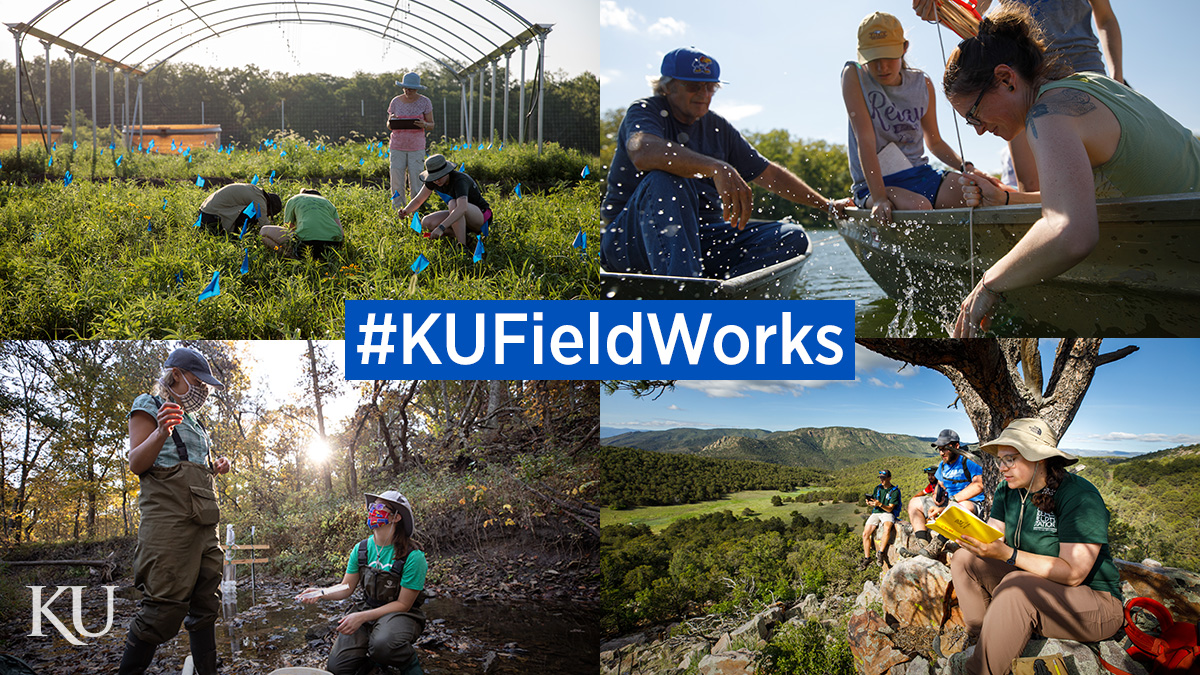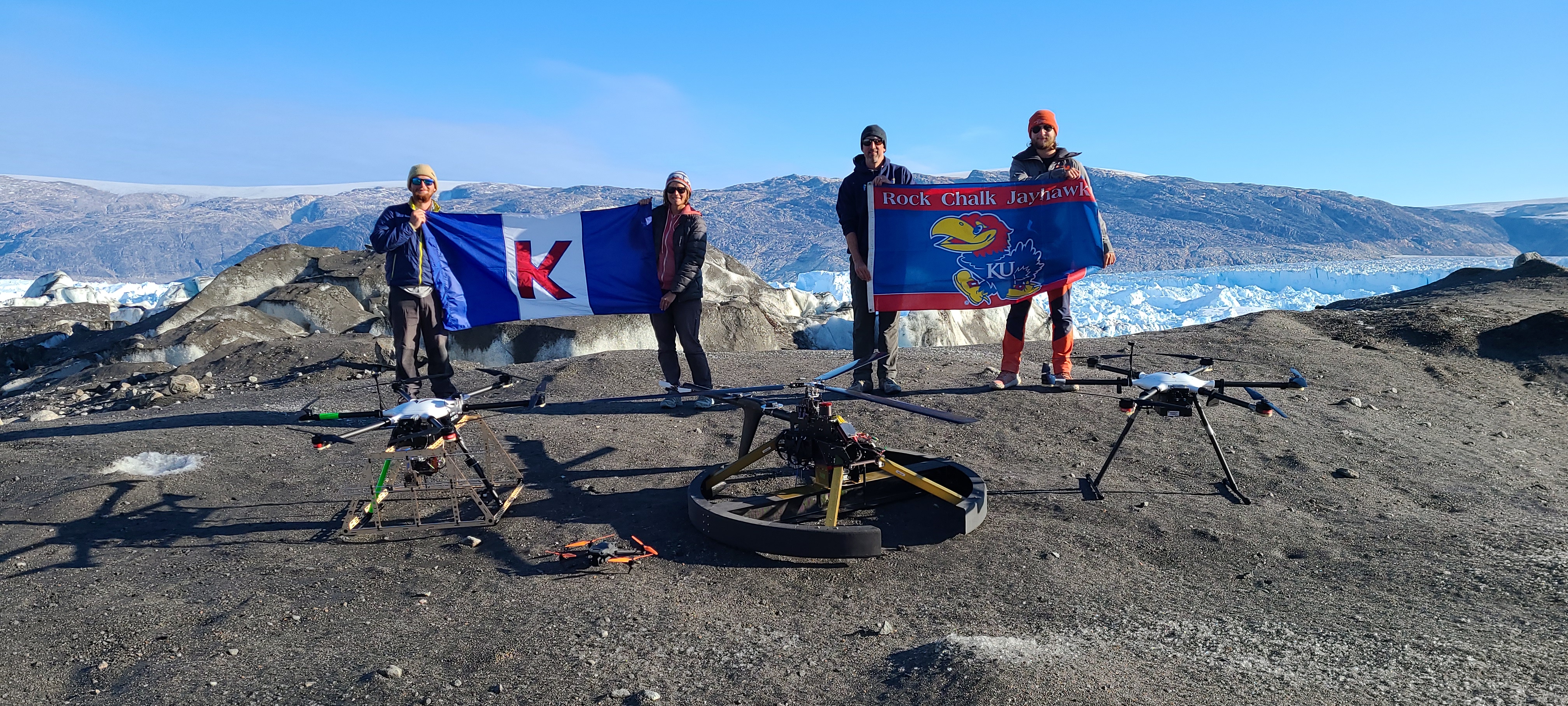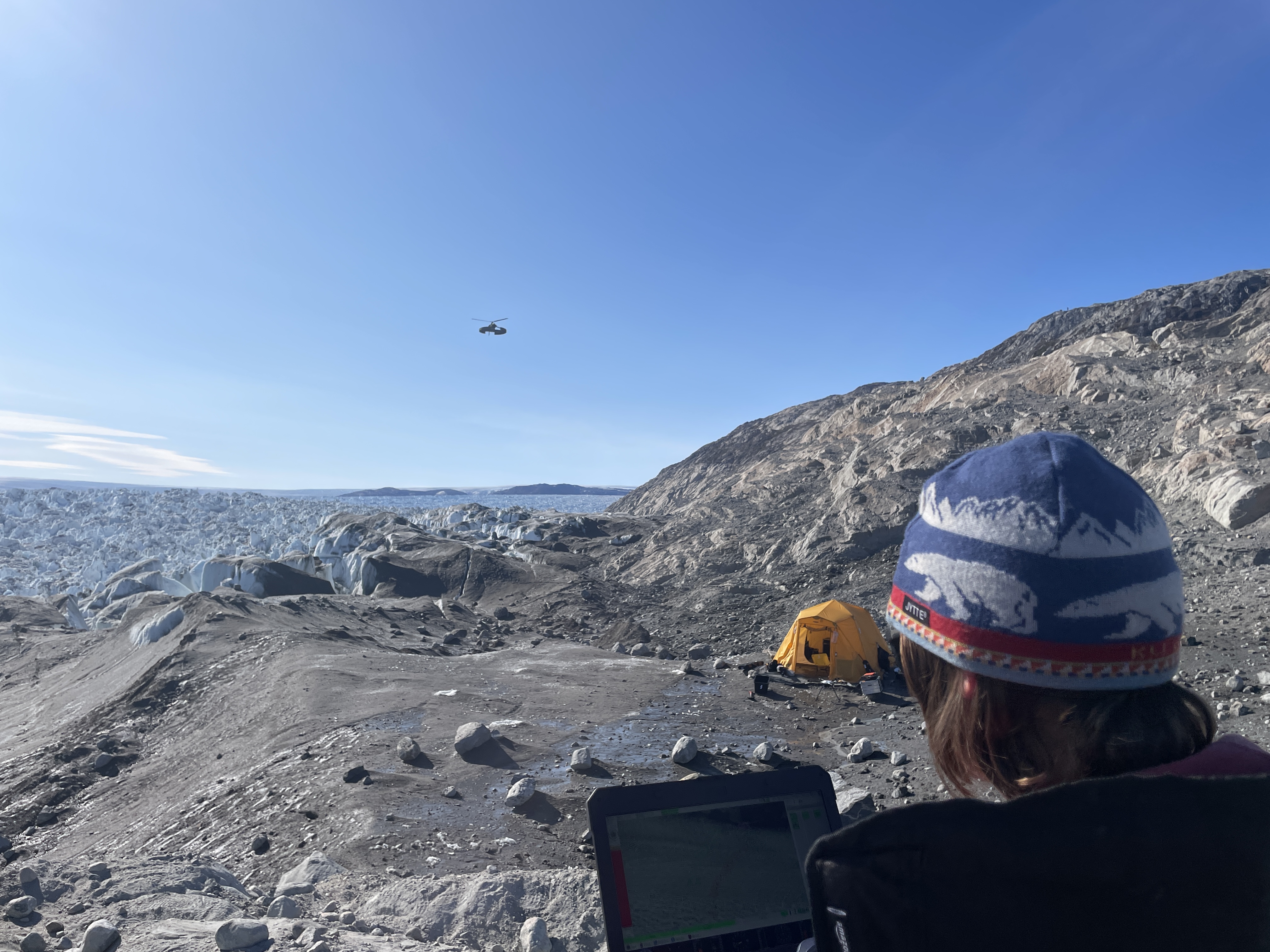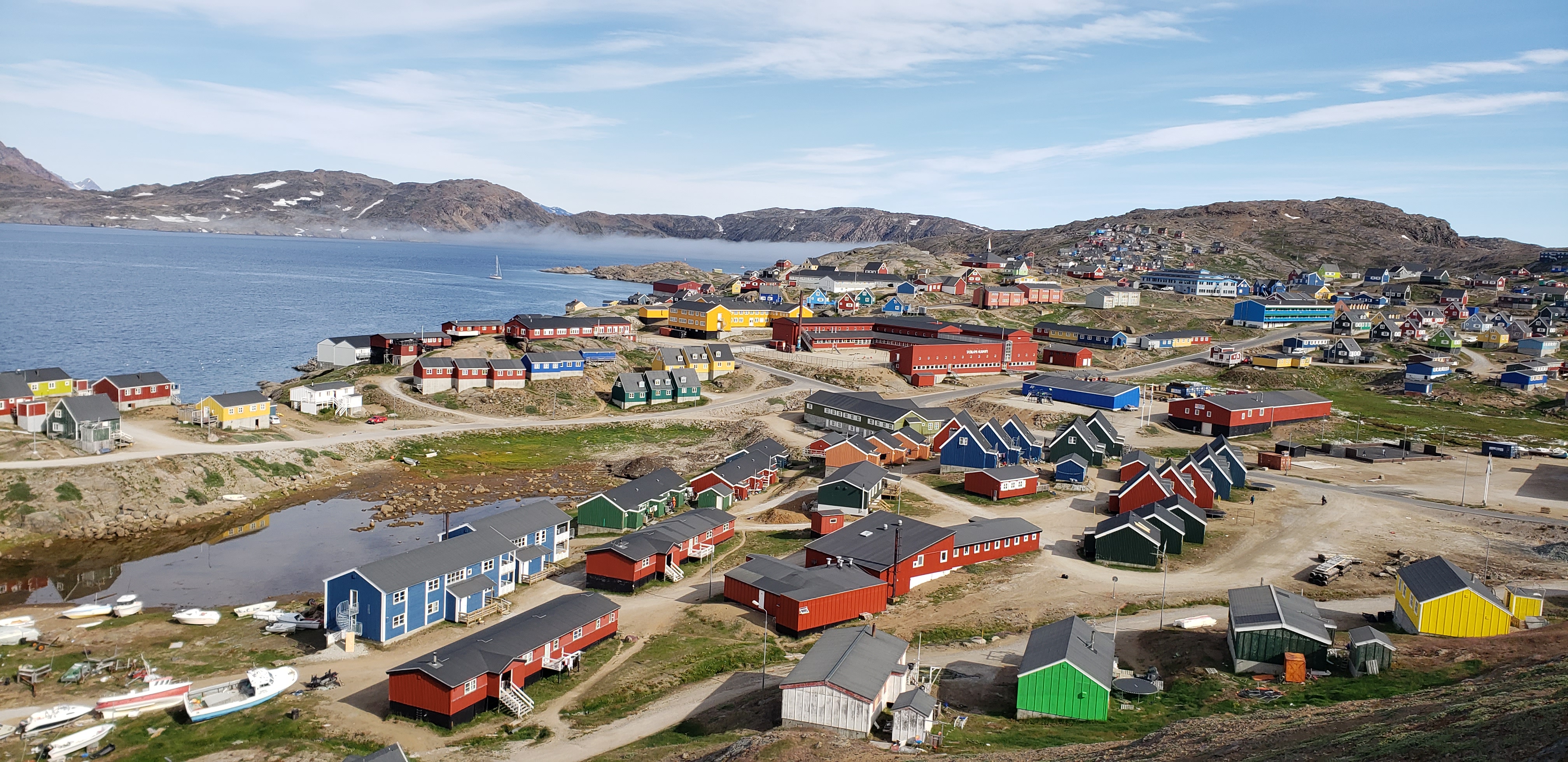#KUFieldWorks: Measuring glaciers to predict sea level rise

Editor’s note: Fieldwork provides invaluable insights about real-world environments and processes, expanding and reinforcing what researchers learn in classrooms, labs and collections. KU faculty, staff and students across a spectrum of disciplines are taking their inquiry directly to rivers, prairies, dig sites, glaciers, islands, burial grounds and more this summer. Through the #KUFieldWorks series, we'll join them on their adventures.
Q&A with Emily Arnold, aerospace engineering associate professor and graduate program director
A team of University of Kansas researchers is using radar-equipped drones to monitor changes in glaciers. This work is essential to understanding how quickly sea levels rise and make forecasts about the impact of that change.
Emily Arnold is the principal investigator for this research. She is an associate professor of aerospace engineering and director of the aerospace engineering graduate program. She is also affiliated with the Center for Remote Sensing & Integrated Systems. Arnold and her team conducted fieldwork in the Helheim Glacier in Greenland. There, they researched ways to increase the accuracy of modeling ice sheet movement.

What methods, approaches, experiments, etc. are you using?
We were flying unmanned aerial systems (UAS, or often referred to as “drones”) equipped with ice-penetrating radar developed by the Center for Remote Sensing & Integrated Systems. While CReSIS has developed and flown airborne ice-sounding radar for several decades, the system we were flying was unique due to its small form-factor and ability to be integrated onto a small UAS. Both vehicles we had were rotorcraft, which means they are not only capable of vertical takeoffs and landings (which was necessary given our location did not have a long runway for fixed-wing vehicles), but they can also hover and fly much slower than some of the fixed-winged vehicles we have used in the past. This is all very advantageous with regards to the science target. Helheim is highly crevassed, and is considered a polytemperate glacier; both attributes make it particularly difficult to sound with some of our legacy systems. For our project we were able to try out some different approaches to sounding the glacier given the vehicle capabilities, and we are also trying to demonstrate the utility of such vehicles for these types of measurements.
One unique approach we took with our measurements is flying a series of closely spaced flight lines over the same area. By doing so, we hope to synthesize a large cross-track array that would improve surface clutter rejection, and thus make it more likely that we can sound the bed below the ice.
Why does your study matter to your field or for society?
The effects of climate change are far-reaching, and predicting these effects is often difficult. There remain large uncertainties in predicting ice-sheet contributions to future sea level rise (SLR) due to our incomplete understanding of ice sheet dynamics. The measurements we were conducting were over Helheim Glacier, which is one of the most rapidly changing glaciers on the planet. This glacier is also particularly difficult to sound with radar. We are hoping the new approaches we were taking will result in a fine-resolution map of the ice bottom and bedrock below that scientists can then use to improve their ice sheet models.

What do you enjoy most about being in the field?
As an engineer, it is wildly fulfilling to see the system that you have been designing, analyzing, testing and building for months or years in action. Much of my research is very much application-based, so it’s somewhat unique to be able to take an idea all the way from initial theoretical concept to fielded system.
I think fieldwork also makes me a better engineer. It’s one thing to read about and see pictures of the environment that your system will be operating in, and it’s another to be in the environment, experience it for yourself, and see first-hand how the vehicle responds in the environment. Ideally, our eventual end user would be a scientist or groups of scientists, like a glaciologist, who more routinely travels to the field. Our hope is to continue to develop our systems such that you would not require an engineer or highly skilled UAS pilot, but rather a scientist who only requires a few days of training to operate the system. Getting first-hand experience with your system in a relevant environment provides good insight on how you need to further improve or tweak your system.
Finally, I’m a bit outdoorsy and love to travel. I’ve been very privileged to travel to some very unique and remote locations. There’s a LOT of work leading up to these trips, but knowing what that work leads to keeps me motivated on tough days or when the work feels a little tedious.
What are some memorable (funny, scary, surprising, etc.) moments from the field?
By far the most memorable thing that happened in the field was when a huge portion (on the order of hundreds of meters) of the glacier calved off. This is when chunks of ice break off at the terminus. Witnessing the calving event is probably the most amazing, and simultaneously alarming, thing I’ve ever witnessed in person. We were actually in the middle of a flight when it started. The glacier makes a lot of noises all the time, but preceding the calving event, it reminded me of the sights and sounds of when a building is imploded. There were a lot of simultaneously loud popping noises with ice/water spraying in the air, then all of a sudden, a large portion of the glaciers started rising and then rotating (after ice breaks off from the main glacier, the chunks rotate onto their sides, becoming ice bergs). It took about 40 minutes before the glacier finally settled. Though it is one of the most memorable experiences in my life, it was also a grave reminder of what humanity is facing with regards to climate change.

When is fieldwork frustrating, challenging or overwhelming?
All the time. There is so much planning, preparing and testing that goes on before a field deployment, but there are always unexpected changes, no matter how much planning one does. You have to be adaptable. While at times it is very frustrating, as an engineer, I actually enjoy the challenge. It’s what engineers do — we assess the issue, consider available resources, formulate a solution, then execute and solve the problem. Given that most of my fieldwork is in remote locations that take a lot of effort and money to get to, when issues arise you don’t have many options other than figure out a solution.
When we go to the field, we are also gone for weeks at a time. This can be tough missing family and friends, and no real way to regularly talk with them.
How does fieldwork complement the work you do elsewhere?
As I mentioned earlier, I think field experience makes me a better engineer, as I get first-hand knowledge for how the systems I develop operate in a relevant environment.
More importantly, I really enjoy doing outreach, especially to K-12 girls. I love being able to share my field experiences to show young people the awesome experiences and amazing places a STEM career can take you.
First photo: University of Kansas researchers conduct fieldwork in prairies, rivers, streams and mountains. The #KUFieldWorks series follows researchers on their fieldwork adventures.
Second photo: Emily Arnold and colleagues pose near a scientific drone while holding KU flags.
Third photo: Researchers pilot a drone flying over the glacier.
Fourth photo: An aerial view of a remote town near the glacier where Emily Arnold's team conducted their field research.